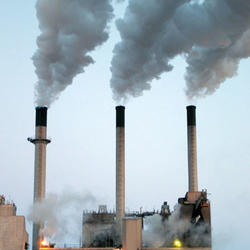What is the biggest coal deposit in the United States?
The biggest coal deposit by volume is the Powder River Basin in Wyoming and Montana, which the USGS estimated to have 1.07 trillion short tons of in-place coal resources, 162 billion short tons of recoverable coal resources, and 25 billion short tons of economic coal resources (also called reserves) in 2013. The coal in the Powder River Basin is subbituminous in rank. Large coal deposits can also be found in the Williston Basin in North Dakota and Montana (lignite in rank), the Appalachian Basin in Ohio, Pennsylvania, West Virginia, Virginia, and Alabama (bituminous in rank), and the Illinois Basin in Illinois and Indiana (bituminous in rank).
Learn more: U.S. Coal Resources and Assessment
Related
What are the types of coal?
There are four major types (or “ranks”) of coal. Rank refers to steps in a slow, natural process called “coalification,” during which buried plant matter changes into an ever denser, drier, more carbon-rich, and harder material. The four ranks are: Anthracite : The highest rank of coal. It is a hard, brittle, and black lustrous coal, often referred to as hard coal, containing a high percentage of...
What is coal used for?
Coal is primarily used as fuel to generate electric power in the United States. In coal-fired power plants, bituminous coal, subbituminous coal, or lignite is burned. The heat produced by the combustion of the coal is used to convert water into high-pressure steam, which drives a turbine, which produces electricity. In 2019, about 23 percent of all electricity in the United States was generated by...
What is coal?
Coal is a sedimentary deposit composed predominantly of carbon that is readily combustible. Coal is black or brownish-black, and has a composition that (including inherent moisture) consists of more than 50 percent by weight and more than 70 percent by volume of carbonaceous material. It is formed from plant remains that have been compacted, hardened, chemically altered, and metamorphosed by heat...
Which country has the most coal?
As of January 2020, the United States has the largest recoverable coal reserves with an estimated 252 billion short tons of coal remaining, according to the U.S. Energy Information Administration . Learn more: U.S. Coal Resources and Assessment World Coal Quality Inventory
Coal geology and assessment of coal resources and reserves in the Powder River Basin, Wyoming and Montana
Assessment of coal geology, resources, and reserve base in the Powder River Basin, Wyoming and Montana
Drill hole data for coal beds in the Powder River Basin, Montana and Wyoming
Assessment of coal geology, resources, and reserves in the Southwestern Powder River Basin, Wyoming
A critical review of published coal quality data from the southwestern part of the Powder River Basin, Wyoming
Megascopic lithologic studies of coals in the Powder River basin in Wyoming and in adjacent basins in Wyoming and North Dakota
Assessment of coal geology, resources, and reserves in the northern Wyoming Powder River Basin
Assessment of Coal Geology, Resources, and Reserves in the Gillette Coalfield, Powder River Basin, Wyoming
Related
What are the types of coal?
There are four major types (or “ranks”) of coal. Rank refers to steps in a slow, natural process called “coalification,” during which buried plant matter changes into an ever denser, drier, more carbon-rich, and harder material. The four ranks are: Anthracite : The highest rank of coal. It is a hard, brittle, and black lustrous coal, often referred to as hard coal, containing a high percentage of...
What is coal used for?
Coal is primarily used as fuel to generate electric power in the United States. In coal-fired power plants, bituminous coal, subbituminous coal, or lignite is burned. The heat produced by the combustion of the coal is used to convert water into high-pressure steam, which drives a turbine, which produces electricity. In 2019, about 23 percent of all electricity in the United States was generated by...
What is coal?
Coal is a sedimentary deposit composed predominantly of carbon that is readily combustible. Coal is black or brownish-black, and has a composition that (including inherent moisture) consists of more than 50 percent by weight and more than 70 percent by volume of carbonaceous material. It is formed from plant remains that have been compacted, hardened, chemically altered, and metamorphosed by heat...
Which country has the most coal?
As of January 2020, the United States has the largest recoverable coal reserves with an estimated 252 billion short tons of coal remaining, according to the U.S. Energy Information Administration . Learn more: U.S. Coal Resources and Assessment World Coal Quality Inventory





